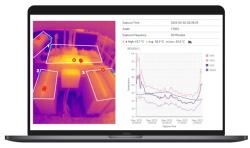
OR WAIT null SECS
© 2024 MJH Life Sciences™ and Turbomachinery Magazine. All rights reserved.
Myth: If You Have CFD, You Don't Need Engineers
CFD is a great tool, but it takes experienced engineers to get accurate results.
When I started to work in college with computational fluid dynamics (CFD) software (in the late 80s), we would write our codes ourselves (usually in FORTRAN) and were really happy when we could run a problem without crashing the code. User interfaces were unknown, at least to us. Two-dimensional runs were fairly standard, but Navier Stokes was still difficult, especially for separated flows, and the appropriate turbulence models were sought. Transient Analysis just started. Turbomachinery secondary flows were a hot topic. Today, most of us in industrial settings are used to well-tested commercial codes with convenient user interfaces, the capability to automatically generate appropriate grids and helpful post-processing tools. So, why do we still need aero engineers?
Here’s why: Codes do not understand flow problems; they are simply tools that produce numbers—albeit with the capability to produce copious amounts of colorful graphs. And CFD results don’t always match test data! That doesn’t mean they are entirely wrong, but they may miss flow features, create artifacts, or miss bulk results, such as flow, head, and efficiency.
It is also a misunderstanding to think that purchasing one of these tools creates aero components “out of the box.” Practically all industrial users have internal guidelines and procedures that allow them to bring the experience from many designs into the discussion. The starting port is always an existing design, with known performance data, and the use of one-dimensional tools that allow it to reflect the user’s experience.
We have to acknowledge that CFD employs numerical methods that try to approximate the real world. The Navier Stokes equations themselves are accurate, but they cannot be solved analytically (at least not for the flow problems involving turbomachinery), so all codes attempt to use mathematical numerical models for approximation. The approximation becomes difficult for laminar-turbulent transition, flow separation, fluctuating flow, shock structures, or flows that are not adiabatic. Usually, it’s easier to predict the flow at the well-behaved design point but not near in-surge or choke. The gases we compress show real gas behavior, while numerical codes use ideal gases, tabulated data, or if equations of state are used, create a large computational cost.
The geometry for the problems we’re solving is not exactly the geometry of our compressors. We apply a grid that more or less matches the geometry but only at discrete points. Grids can be refined, but ultimately, computational times rounding errors and the fact that there are manufacturing tolerances or the difference between a hot part and a cold part. Clearances are often dependent on pressures, temperatures, and rotational speed.
The approximation also often involves excluding or simplifying other real-world influences, such as heat transfer, real gas behavior, fluid-solid interaction, or the description of surface roughness.
In addition, we are often not able to completely define our physical space: Geometry is subject to manufacturing tolerances, and inlet and outlet conditions often have to be averaged. A more precise description would require a definition far upstream and downstream, where they may be reasonably uniform. Fillets, brazed, or welded parts are typically simplified or omitted. Surface roughness is assumed to be uniform in all directions, which, in reality, depending on manufacturing methods, is usually not the case.
So, why does it work at all? Besides the very sophisticated methods available, we improve our codes by using actual test data to calibrate our methods. And we have experts who interpret the data and, for example, identify whether flow structures in those beautiful color graphs actually make sense. We know what the results for similar problems were. We also just look for the difference in results for a known geometry and the new geometry.
So, CFD is a great tool, but it takes experienced engineers to get appropriately accurate results. The combination has allowed us to precisely predict machine performance.
Klaus Brun is the Director of R&D at Elliott Group. He is also the past Chair of the Board of Directors of the ASME International Gas Turbine Institute and the IGTI Oil & Gas applications committee.
Rainer Kurz is a recent retiree as Manager of Gas Compressor Engineering at Solar Turbines Inc. in San Diego, CA. He is an ASME Fellow and has published over 200 articles and papers in the turbomachinery field.

 Download Issue: March/April 2024
Download Issue: March/April 2024
